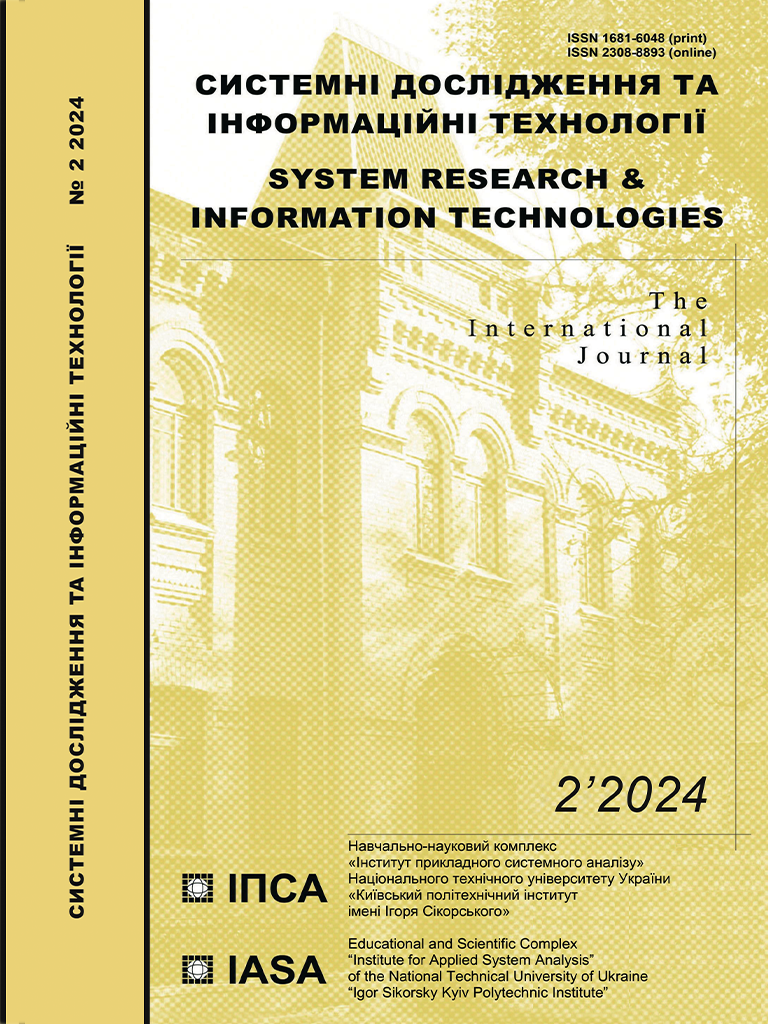Multi-factor forecasting of statistical trends for data science problems
DOI:
https://doi.org/10.20535/SRIT.2308-8893.2024.2.02Keywords:
Data Science, multi-factor forecasting, statistical trends, currency rate forecastingAbstract
The article deals with the processes of multi-factor forecasting of statistical trends for Data Science problems. Most of the classic approaches to data processing consist of studying the consequences of phenomena rather than the factors of their appearance. At the same time, the factors affecting the behavior of the investigated process are assumed to be random and are not investigated. The article discusses the approach to forecasting the parameters of the trend of statistical time series, which consists of the study of factors that lead to changes in the dynamics of the studied process. This approach potentially has better indicators of adequacy, accuracy, and efficiency in obtaining final solutions than classical approaches. The implementation of this approach is shown using an example of the analysis of exchange rate changes. The obtained results show the practicality of considering multi-factoriality in forecasting tasks.
References
Foster Provost and Tom Fawcett, Data Science for Business. Printed in the United States of America. Published by O’Reilly Media, Inc., 2013, 409 p.
David Dietrich, Barry Heller, and Beibei Yang, Data Science & Big Data Analytics: Discovering, Analyzing, Visualizing and Presenting. Indianapolis, Indiana: Data John Wiley & Sons, Inc., 2015, 420 p.
Trevor Hastie, Robert Tibshirani, and Jerome Friedman, The Elements of Statistical Learning Data Mining, Inference, and Prediction; 2nd edition. Springer, 2020, 768 p.
S.V. Kovbasyuk, O.O. Pisarchuk, and M.Yu. Rakushev, The least squares method and its practical application. Zhytomyr: NAU, 2008, 228 p.
O.O. Pisarchuk, V.P. Kharchenko, Nonlinear and multicriterial modeling of processes in traffic control systems. K.: Institute of Gifted Child, 2015, 248 p.
F.O. Zhuravka, Monetary policy in the context of transformational changes in Ukraine’s economy: monograph. Sumy: “Business Perspectives,” Ukrainian Academy of Banking of the National Bank of Ukraine, 2008, pp. 63–123.
S. Kulitsky, “Dynamics of US dollar exchange in Ukraine in 2019: attempted situational analysis,” Ukraine: Events, Facts, Comments, no. 11, pp. 35–46, 2019. Available: http://nbuviap.gov.ua/images/ukraine/2019/ukr11.pdf
Ministry of Agrarian Policy and Food of Ukraine [official site]. Available: https://minagro.gov.ua
Ministry of Finance of Ukraine [official site]. Available: https://mof.gov.ua
National Bank of Ukraine [official site]. Available: http://bank.gov.ua
I. M. Sysoyeva, “The enterprise’s profit forecasting depending on accounting policy methods,” Economics and State, no. 10, pp. 93–94, 2010. Available: http://nbuv.gov.ua/UJRN/ecde_2010_10_26
Ukrainian Information Portal on Finance and Investments “Minfin.com.ua”. Available: https://minfin.com.ua
A. Khivrenko, Exchange rate: how it is determined, who influences it and what should be guided. Available: https://www.epravda.com.ua/publications/2020/09/19/665288/
O.O. Pysarchuk, O.V. Korochkin, and D.R. Baran, “Determining the order of a polynomial model for constructing a trend line in Data Science problems,” Problems of Informatization and Management, 3(71), pp. 35–40, 2022. doi: 10.18372/2073-4751.71.17001.
O. Pysarchuk, Yu. Mironov, I. Pysarchuk, and D. Baran, “Algorithms of Statistical Anomalies Clearing for Data Science Applications,” System Research & Information Technologies, no. 1, pp. 78–84, 2023. doi: 10.20535/SRIT.2308-8893.2023.1.06.
O. Pysarchuk, A. Gizun, A. Dudnik, V. Griga, T. Domkiv, and S. Gnatyuk, “Bifurcation Prediction Method for the Emergence and Development Dynamics of Information Conflicts in Cybernetic Space,” Proceedings of the International Workshop on Cyber Hygiene (CybHyg-2019) co-located with 1st International Conference on Cyber Hygiene and Conflict Management in Global Information Networks (CyberConf 2019). Kyiv, Ukraine, November 30, 2019, pp. 692–709. Available: https://ceur-ws.org/Vol-2654/paper54.pdf

